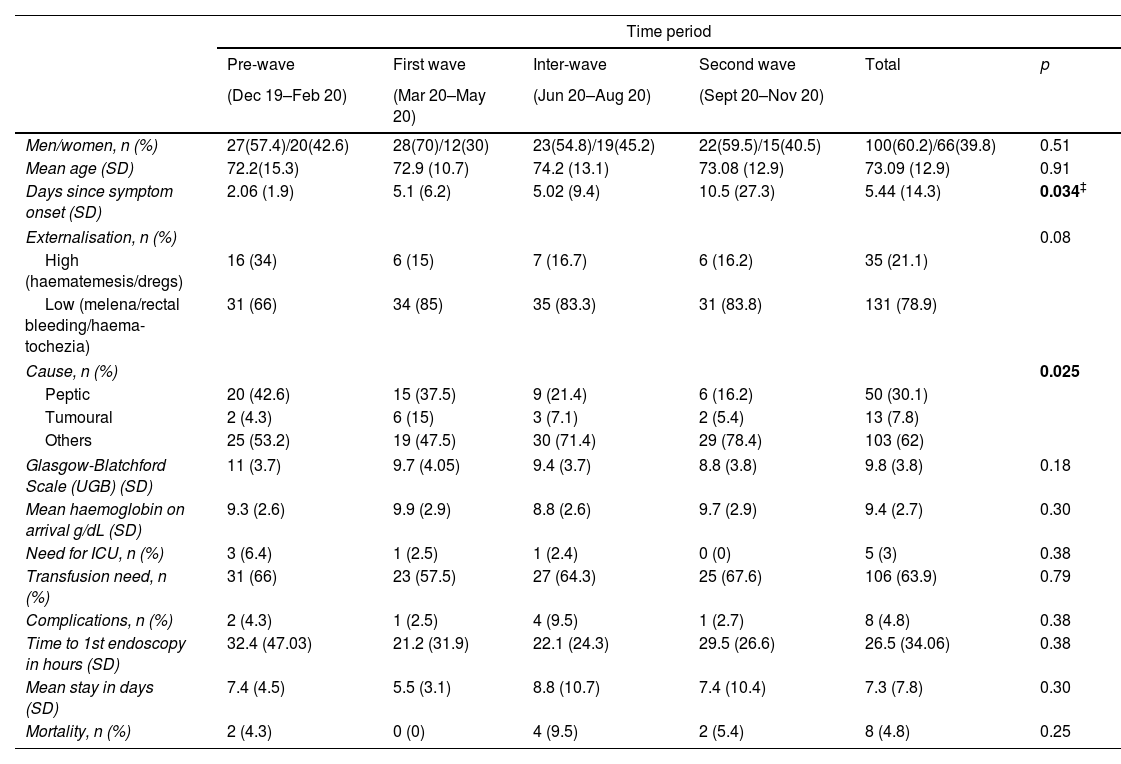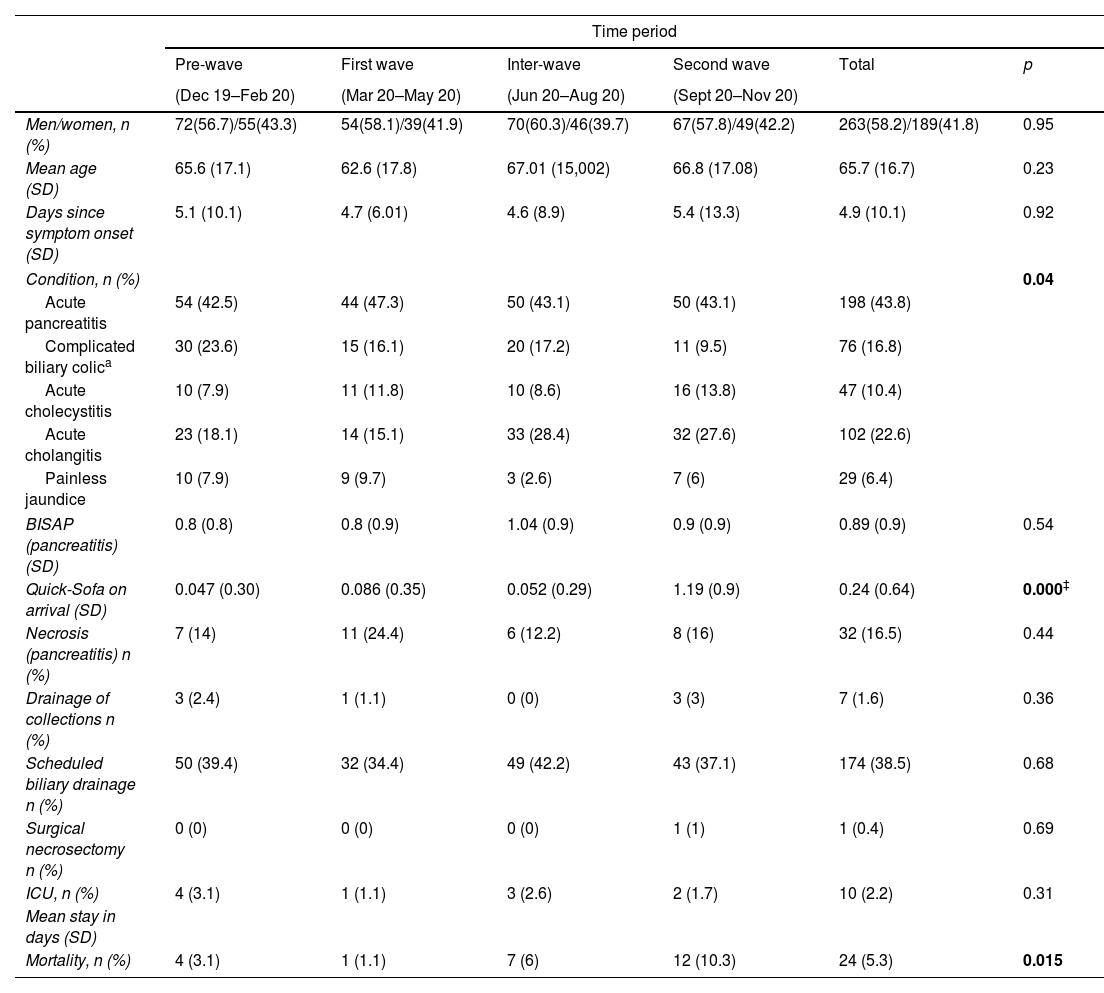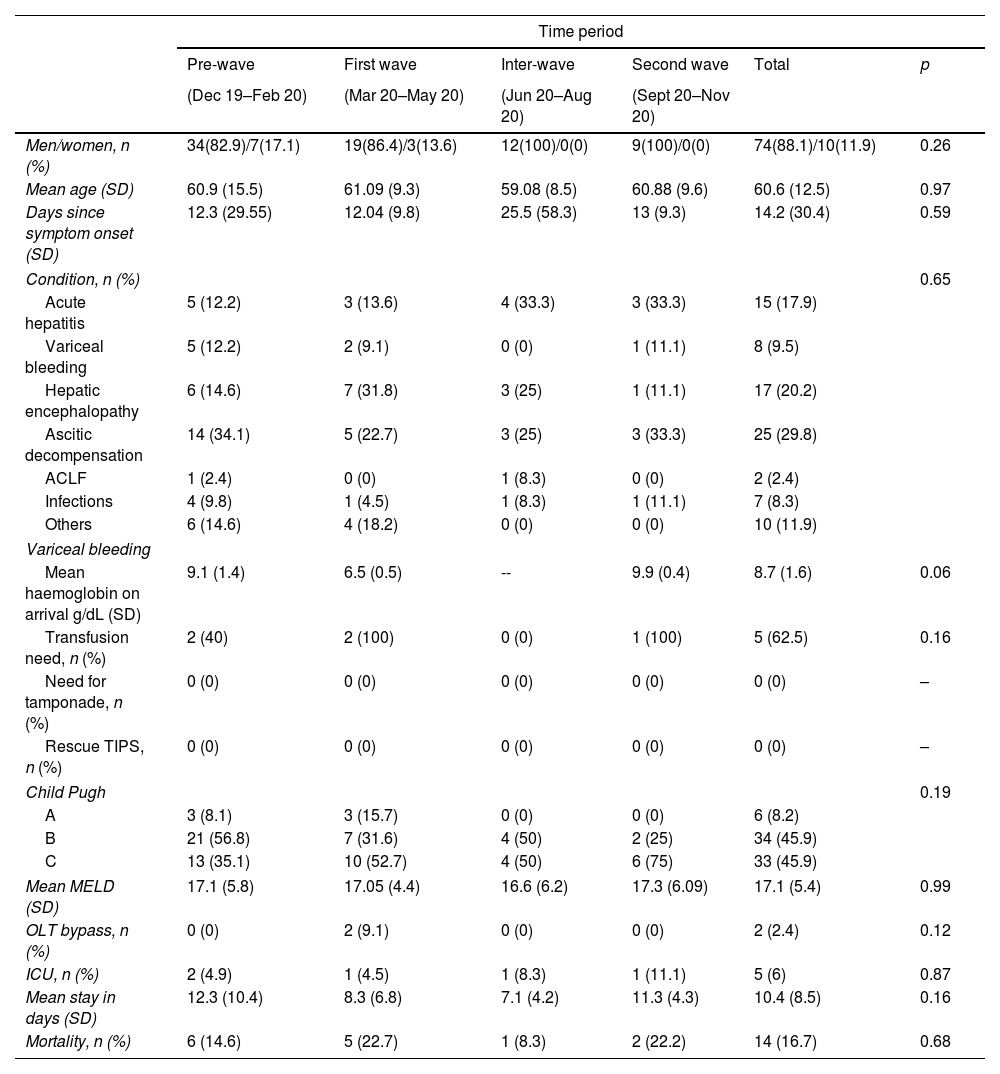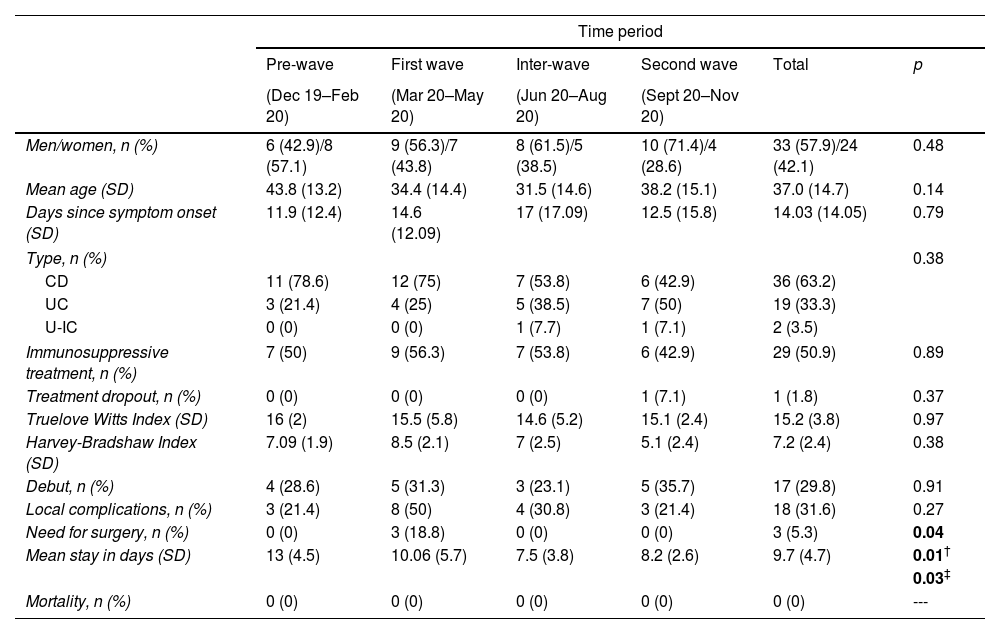The pandemic caused by SARS-CoV-2 has drastically changed the global health landscape. Our objective was to verify if, after the start of the pandemic, there was an increase in in-hospital mortality in patients admitted to a Gastroenterology Service of a 3rd level hospital.
Material and methodsThe 1039 admissions registered at the Virgen de la Victoria University Hospital in Malaga (Spain) were retrospectively analysed in the period between 1 December 2019 and 30 November 2020 (12 months), which were divided into 4 quarters (pre-wave, first wave, inter-wave and second wave) and mortality and other variables (globally and by disease group) were analysed.
ResultsNo statistically significant differences were observed in terms of overall in-hospital mortality in the different periods. (p 0.23). The greatest burden of disease corresponded to biliopancreatic group and, within them, acute pancreatitis (p 0.04), followed by non-variceal gastrointestinal bleeding. In the second semester, mortality increased in the biliopancreatic group (p 0.01). Patients admitted for gastrointestinal bleeding took longer to request care after the start of the pandemic, especially in the second wave (p 0.03). The same was observed in admissions due to tumours, with the time elapsed until the emergency visit more than double in the second semester, with a consequent increase in mortality (p 0.00).
ConclusionsThe global in-hospital mortality in a Gastroenterology Service in a 3rd level hospital has not increased with the onset of the SARS-CoV-2 pandemic, however, a higher in-hospital mortality has been recorded in biliopancreatic diseases and digestive tumours diagnosed on an in-patient basis between June and November 2020.
La pandemia ocasionada por el SARS-CoV-2 ha modificado drásticamente el panorama sanitario mundial. Nuestro objetivo fue comprobar si tras el inicio de esta se produjo un aumento en la mortalidad intrahospitalaria en los pacientes ingresados en un servicio de aparato digestivo de un hospital de tercer nivel.
Material y métodosSe analizaron retrospectivamente 1.039 ingresos en el Servicio de Aparato Digestivo del Hospital Universitario Virgen de la Victoria en el periodo comprendido entre el 1 de diciembre de 2019 y el 30 de noviembre de 2020 (12 meses), se dividieron en 4 trimestres (preoleada, primera oleada, interoleada y segunda oleada) y se analizó la mortalidad y otras variables (de forma global y por grupo de enfermedades).
ResultadosNo se observaron diferencias estadísticamente significativas en cuanto a mortalidad intrahospitalaria global en los diferentes periodos (p=0,23). La enfermedad con mayor predominio fue la biliopancreática y, dentro de ella, las pancreatitis agudas (p=0,04), seguidas del sangrado digestivo no varicoso. En el segundo semestre aumentó la mortalidad en el grupo biliopancreático (p=0,01). Los pacientes que ingresaron por hemorragia digestiva tardaron más en solicitar asistencia tras la pandemia, especialmente en la segunda oleada (p=0,03). Esto mismo se objetivó en los ingresos por tumores, siendo el tiempo transcurrido hasta la consulta a Urgencias mayor del doble en el segundo semestre, con el consecuente aumento en la mortalidad (p=0,00).
ConclusionesLa mortalidad global intrahospitalaria en el Servicio de Aparato Digestivo no ha aumentado con la sobrevenida de la pandemia por SARS-CoV-2, si bien se ha registrado una mayor mortalidad intrahospitalaria en las enfermedades biliopancreáticas y los tumores digestivos diagnosticados en régimen de hospitalización entre junio y noviembre de 2020.












